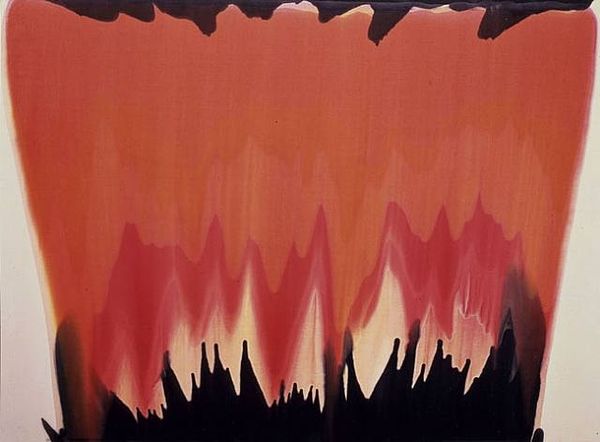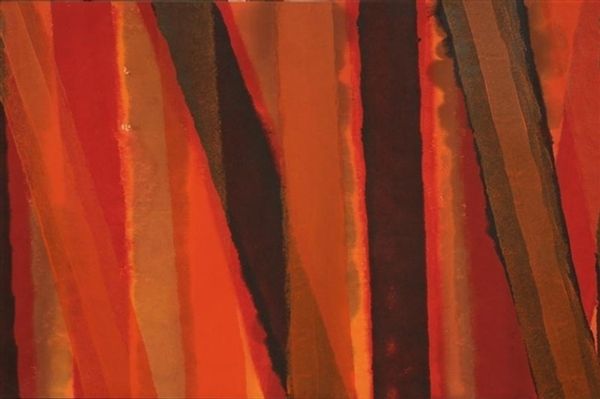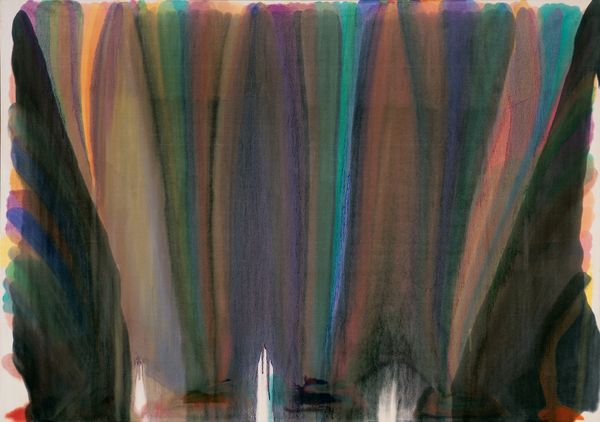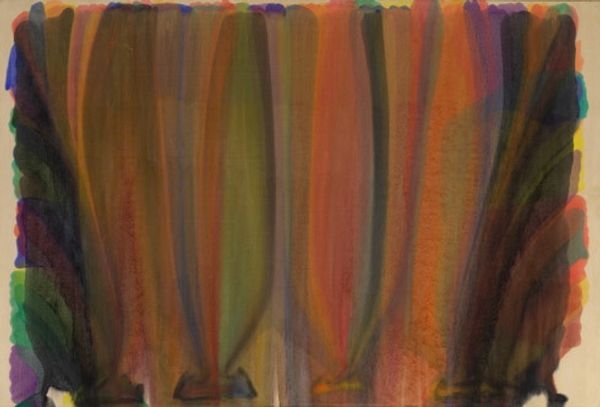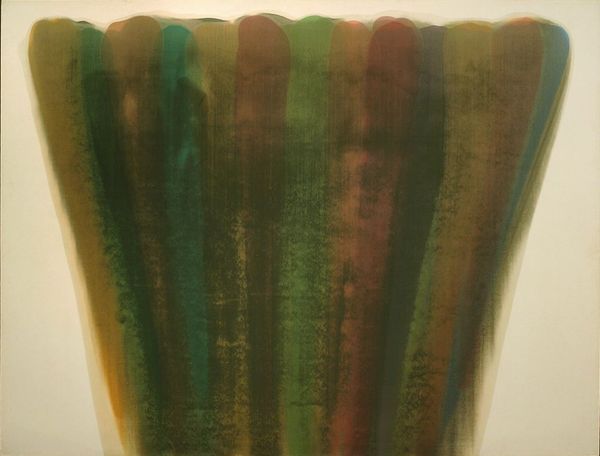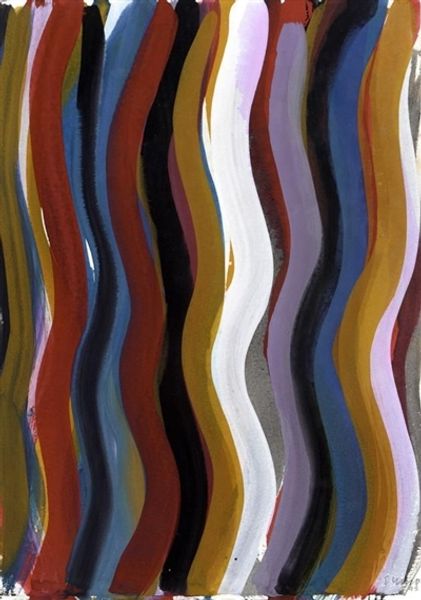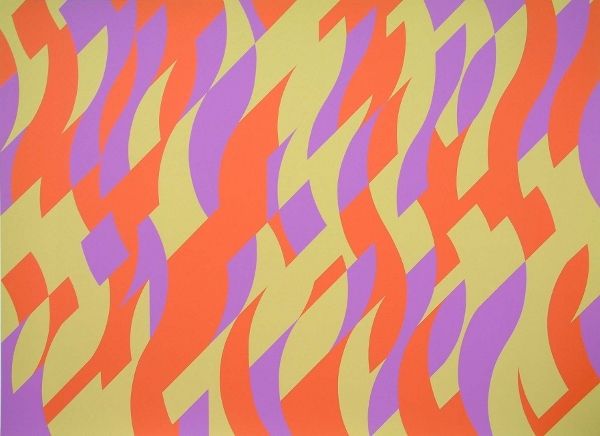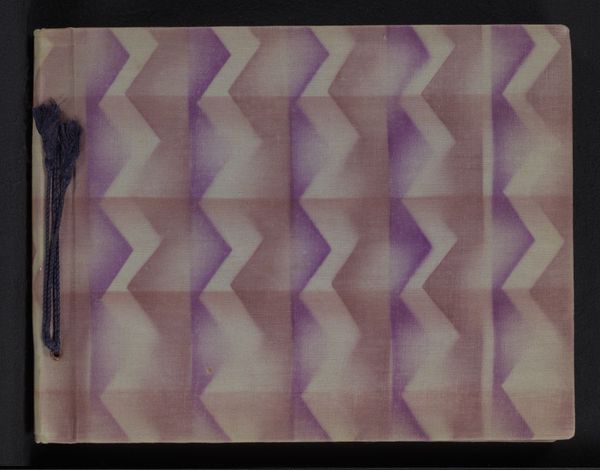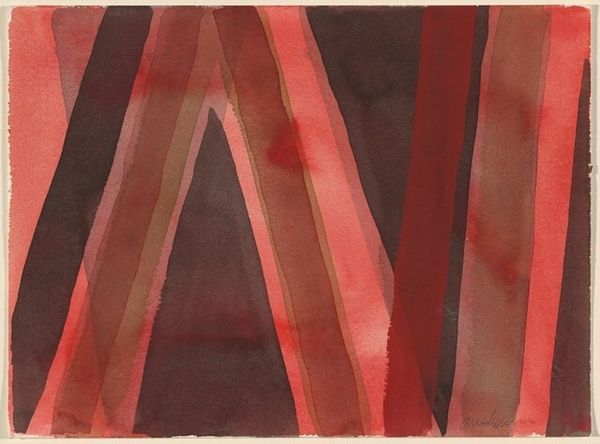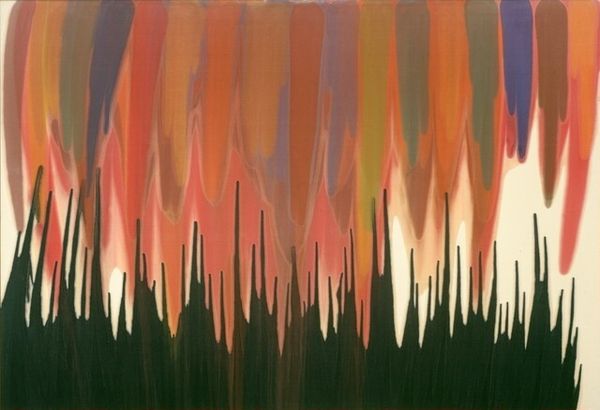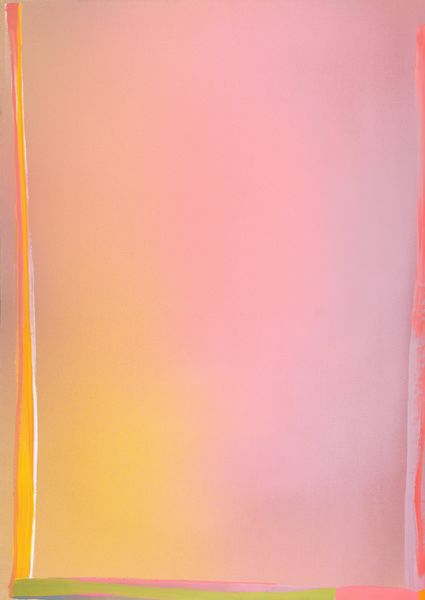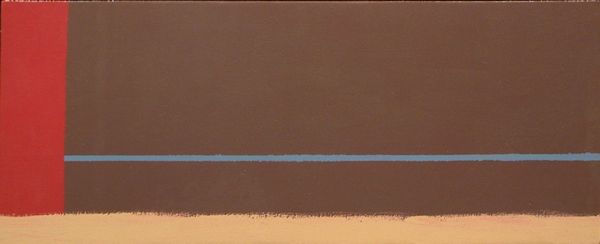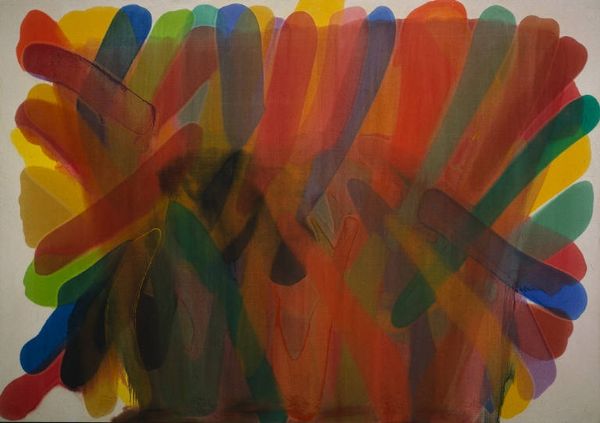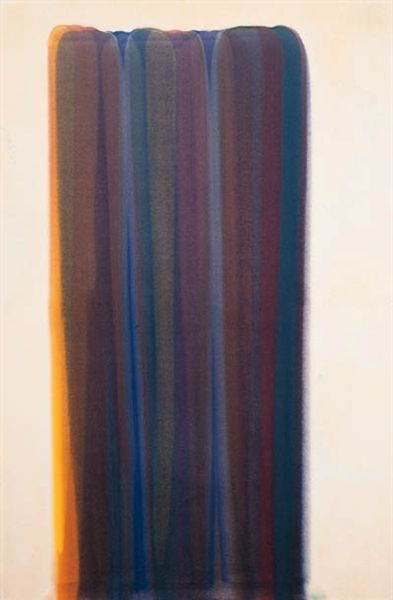
stain, acrylic-paint, ink
#
washington-colour-school
#
abstract expressionism
#
stain
#
colour-field-painting
#
acrylic-paint
#
ink
#
acrylic on canvas
#
abstraction
#
line
#
abstract art
Dimensions: 358.1 x 250.2 cm
Copyright: Morris Louis,Fair Use
Curator: Standing before us is "Saf," a captivating artwork crafted by Morris Louis in 1959. Louis, a key figure in the Color Field movement, employed acrylic and ink stain on canvas to produce this mesmerizing piece. Editor: My immediate reaction is… intense heat. Those reds, yellows, and smoldering blacks cascading downwards, it feels almost volcanic. There's a visual rhythm, yet it's simultaneously chaotic, drawing me in. Curator: That "cascading downwards" is crucial. Louis developed a staining technique where he poured diluted acrylic paint onto an unprimed canvas, allowing the colors to soak directly into the fabric. This technique rejects the traditional sense of brushstrokes or applying paint, giving it a fluid, almost ethereal quality. How does that effect how it should be valued by the audience? Editor: The lack of traditional brushwork destabilizes conventional notions of artistic labor. Who deems a painting good because they are witnessing the hours the painter has put into it? Here, Louis allows gravity and the inherent properties of the paint to do the work, subverting art as something requiring manual manipulation, highlighting the role of chance and the material itself as an actor. It's kind of an institutional rebellion, if you consider the art world's reverence for skill and mastery. Curator: Absolutely. And that’s central to understanding Color Field painting. Artists sought to purify painting, focusing on color and form as the primary subjects, stripping away narrative or representational elements. One can also link this impulse toward simplicity to Cold War ideologies; artists tried to evade governmental control, yet received heavy CIA funding for it. In that regard, what message, in your view, is this particular non-figuration really promoting? Editor: Beyond governmental issues, it speaks to the political climate. Abstract expressionism in the mid-20th century emerged partly from anxieties of existential meaning during that specific era of impending doom. The sheer scale of the painting envelops the viewer, promoting a sense of boundlessness. I feel liberated but also melancholic, and I believe that it is what gives its profound, emotional effect. Curator: A very fair comment about our engagement with affect. Now, in all fairness, after our conversation, I wonder what new frameworks might we use to reconsider "Saf"? Editor: I'm thinking, after considering all the issues, this painting provides space for subjective responses and emotional connections, precisely by refuting imposed meaning. It shows the potential for freedom even under pressure of hegemonic, societal issues.
Comments
No comments
Be the first to comment and join the conversation on the ultimate creative platform.
